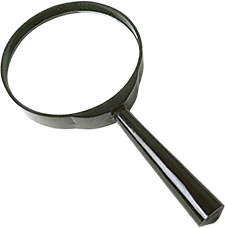- 01: Introduction
- 02: History
- 03: Propellants, Firearms, and Ammunition Development
- 04: Modern Firearms Manufacture
- 05: Small Arms Ammunition
- 06: Evidence Handling Procedures
- 07: Equipment and Instrumentation
- Introduction
- Objectives
- AFTE Knowledge and Ability Factors
- Measurement, Standards, and Accuracy
- Weight, Force, and Their Measurement
- Dimensional Data and Measurement Tools
- Muzzle Velocity of Bullets
- Stereo and Comparison Microscopes
- Small Tools and Supplies
- Imaging Equipment
- Field Support Equipment
- Computer-Based Technologies
- Firing Facilities
- Selected Bibliography
- 08: Examination of Firearms
- 09: Cartridge and Shotshell Examination
- 10: Characterization and Evaluation of Fired Projectiles
- 11: Bullet Comparison and Identification
- 12: Gunshot Residue and Distance Determination
- 13: Toolmark Identification
- 14: Communicating Results
- Resources


Stereo and Comparison Microscopes
Home > Equipment and Instrumentation > Stereo and Comparison Microscopes
Comparison microscopy is the most important technique in the field of forensic firearms/toolmark examination and comparison. Similar to other forms of visible light microscopy, it is enhanced to allow simultaneous examination of two separate objects. These microscopes allow the simultaneous comparison of the unique striations and impressed marks found on the surfaces of objects bearing toolmarks (including fired bullets and cartridge cases).
Primitive Microscopy

Magnifying glass, a classic example
of primitive microscopy
The most primitive form of microscopy uses a convex lens to make objects appear larger. These lenses are normally convex on both sides and have a short focal length. Whenever an object is placed within this short focal length, an image is produced that is erect and larger than the original object. An excellent modern example of this is the simple handheld magnifier. The magnifying power of primitive lenses was not very high. Nonetheless, it was a significant accomplishment that paved the way for the next evolutionary step – the compound microscope.
| Note: |
| As far back as 2600 B.C. the Egyptians noticed the phenomenon of magnification using rock crystals with a roughly convex shape. Later, the Greeks and Romans practiced glass blowing and observed the magnifying effect of water in curved glass containers. They also used convex lenses to focus and magnify the heat from the sun. The Arab mathematician Alhazen described how the lens of the human eye forms an image on the retina. In mid-thirteenth century England, Roger Bacon referred to the use of convex lenses in many of his works. During the same period, frame spectacles came into use. |




